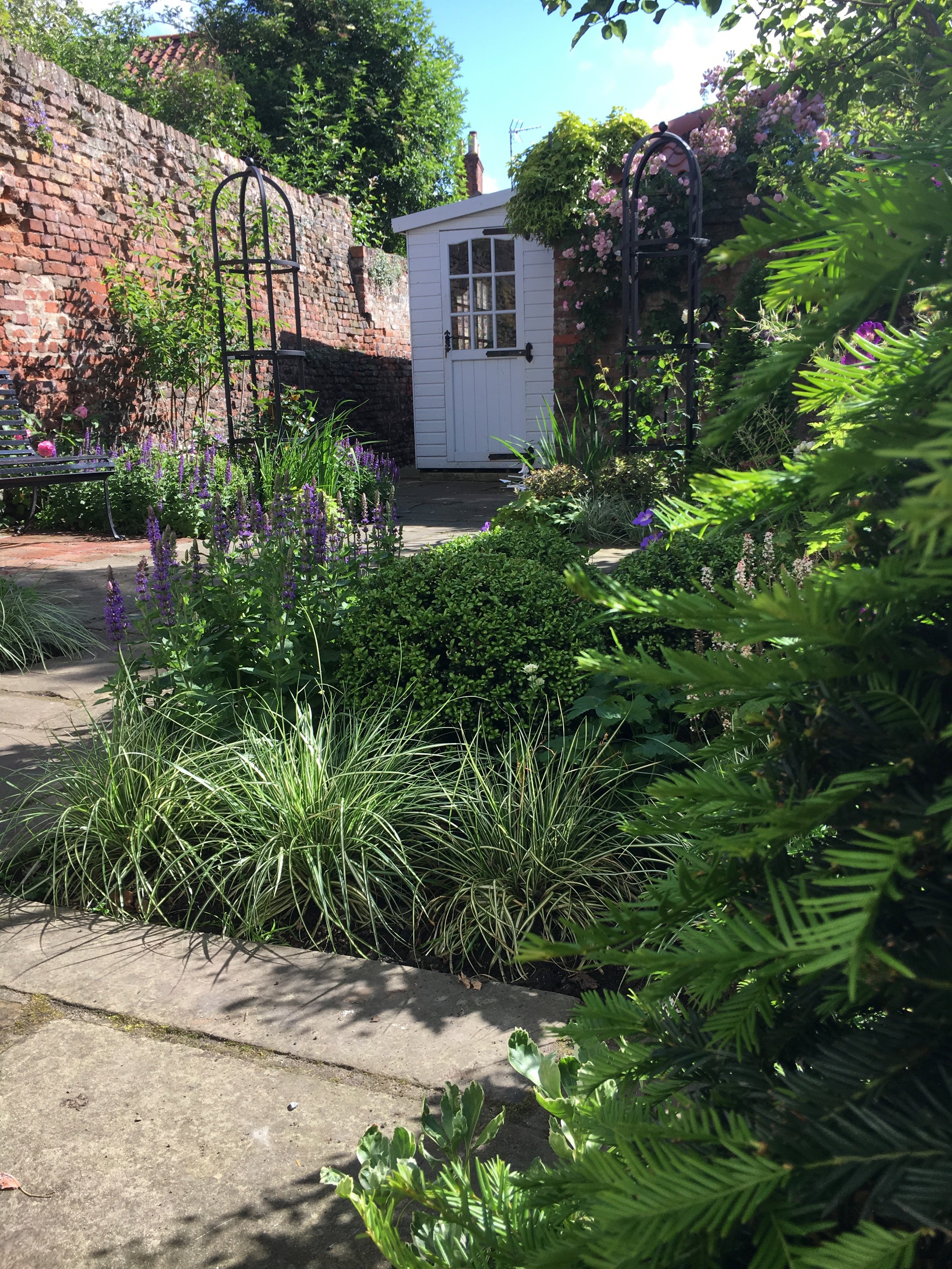Expert Guide to Small Garden Design
This guide continues the mini-series of linked guides based on a garden’s size - and here I would like to assess small garden design and ideas for what can be incorporated within a smaller space. If needed please refer back to the first in the series - Medium Sized Garden Design - for an overview of how I differentiate between small gardens, medium gardens, and large gardens.
A small garden will be big enough (in most instances) to allow the garden to function and enable one activity to take place for your family and maybe a few friends (usually either somewhere to relax, or somewhere to dine, or somewhere to entertain). I group together courtyards, terraced concrete yards and small new-build house gardens into this ‘small’ category, and the key challenge with small garden design is to create a space that is both usable and yet still feels like a garden.
Small garden spatial design
Small and urban gardens therefore require clever spatial design and much more attention to detail than is stricyly necessary within a larger garden. This means that a design should allow for flexibility to enable different uses of the available space to be possible - for example a place to relax as well as a place to dine. Even the details though should function in multiple ways - for example low retaining walls should be built to around seat height (around 45cm) to allow people to sit on them comfortably allowing for a greater number of occasional seats (for entertaining or for the gardener should they have a bad back). Similarly if you need storage in the garden this needs to be planned in from the beginning so that it can either be hidden (for example green roofs on a bicycle store), screened, or be it can be combined with other features to become multi-use - the best example of this would be to have storage for seat cushions built into the seats themselves. This is why it is so important to start with identifying the key activity that a garden should support and then how to add extra functionality wherever possible…and as simply as possible.
Quality and simplicity in a small garden
A smaller garden also tends to be more expensive (per unit area) than a larger garden as there is nowhere to hide. Materials and features need to be of the right quality as the space is too small to allow poor choices to impact the overall feel. You can’t simply add an area of lawn to fill the available space. Essentially I therefore look at these small gardens as needing to look good from every angle. They need to function well from above (from a bedroom window), from a kitchen/diner that overlooks the space (essentially in the UK meaning a garden will be viewed almost exclusively through windows for at least 6 months of the year), and finally when sat within the garden itself.
The over-riding design force should therefore be to keep things simple and within scale (against the house and the rest of the garden). Interestingly though that does not mean you need to keep features small as this has a tendancy to looking messy. Instead you need to go large and bold for maximum impact - and this ties together with that notion of simplicity. It applies to pots you may add, water features installed, sculptures sited, and focal or feature plants planted. It doesn’t though apply to lighting choices and effects - these should be subtle, highlighting features and making the garden usable at night if that is desired, and not flooding the space with light.
Planting for small gardens
Planting a small garden is also more difficult that a larger garden. You need to consider year round interest (so that it looks good in the winter with evergreens and dots of colour) but similarly you will need to accept that a small garden requires compromise as there is simply not enough space for the type of floral display you would find in a larger garden. Instead you plan for points of seasonal interest within the evergreen skeleton and try to select plants that flower or perform over the longest period possible - selecting for flower, foliage and form.
When laying out the planting I prefer bold, almost sculptural, blocks of plants to create a strong structural feel and then add in additional plants for extra flowering or for a client’s sentimental interest. These planting areas also really need to push into the main garden (and not simply be contained to borders at the boundary). This adds a dynamism to a small garden and allows you to feel as though you are surrounded by planting and brings you closer to the nature that shares your garden. Of course you can overdo this and this is where a good design eye comes in as you need to carefully balance the mass of the planting against the voids of the paved spaces. I use, as a rule-of-thumb, a planting mass of around 25 - 50% of the space in a small garden depending on the client, the functions they want their garden to fulfil, and the overall cohesion of each individual garden.
Designing a small garden, whether a courtyard, a new-build, or just a small space, or just pulling together small garden ideas, requires a careful eye to select the right features and plants as well as a sensibility to edit these down to keep the space simple and functional. That still leaves a huge scope for interesting and creative small garden spaces that are unified in their design and that function as a proper garden for you to enjoy and use.



